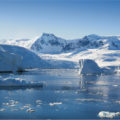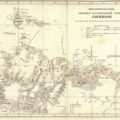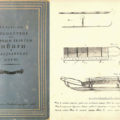The outstanding polar explorer and navigator, Ferdinand Wrangel, passed away 150 years ago. Wrangel circumnavigated the globe three times and was a progressive statesman and one of the founders of the Russian Geographical Society. Today, many geographical locations are named after Wrangel, including, most famously, a Russian island in the waters of the Arctic Ocean. Wrangel Island, part of the Wrangel Island Reserve, displays the harsh beauty of polar nature in all its splendor and is included in the UNESCO World Heritage List.
The dream
Ferdinand Wrangel (Ferdinand Friedrich George Ludwig von Wrangel) was born on December 29, 1796 in Pskov into a noble family from an old Baltic German family. Despite the origin, Ferdinand’s parents did not have enough livelihoods, and the boy was raised by close relatives. Once Wrangel’s adoptive family was visited by the first Russian round-the-world navigator Ivan Kruzenshtern. The boy heard firsthand an amazing story about the journey to the shores of Kamchatka and America. Since then, he had a dream to see distant seas and lands for himself. It should be noted here that Kruzenshtern in the future had a great influence on the formation of Wrangel’s scientific views and interests. They exchanged letters for 22 years continuously, in which Ferdinand shared his impressions and asked for advice.
In 1807, young Wrangel, without speaking a word in Russian, crossed the threshold of the Naval Cadet Corps — one of the most prestigious Educational Institutions of the Russian Empire. In 1815 well-trained officer graduated the “alma mater” speaking great Russian. According to his contemporaries, he “knew perfectly all the twists and turns of Russian speech and loved Russian people from the bottom of his heart.” Starting to serve in the Navy, Ferdinand did not leave his studies. He read a lot, studied mathematics and learned to draw up maps on his own. In 1817, Ferdinand Wrangel managed to get into his first round-the-world expedition in Kamchatka Frigate, headed by the famous Russian navigator Vasily Golovnin. A meeting with Golovnin had a decisive influence on Wrangel’s future fate. Onboard Kamchatka, he finally filled in the gaps in education and gained invaluable practical skills, while showing himself as a man of strong character and excellent organizational skills.
In search of unknown land
In 1820, Wrangel was asked to lead a land expedition on dogs to the North-East of Siberia. The task was to explore the coast between the Kolyma River and the Bering Strait. There, in the waters of the Arctic Ocean, Russian seafarers had previously seen mountainous outlines of an unknown land. This fact was confirmed by Chukchi tribal leaders. Wrangel also had to test the hypothesis of possible isthmus between Asia and America. The expedition took place in very difficult weather conditions. Both people and dogs were freezing, food warehouses were ransacked, ice and hummocks stood in the way of brave travelers. “It seemed that we had reached the limits of living creation”, this is how Wrangel would later describe his expedition. Unfortunately, Wrangel did not get to see the unknown land, but believed in its existence and contoured it well enough. Despite unsuccessful searches for over three years, Wrangel’s expedition collected unique material and made an outstanding contribution to the study of the Arctic Ocean. He discovered a permanent ice-hole (Great Northern Polynya), the fact that far from the shores of Siberia the Sea is not bound by eternal ice. The expedition finally proved the existence of the Northeast Passage, confirming that the entire Northern Coast of Russia is washed by the Sea. Wrangel was the first of travelers to describe the ice islands and hummocks, studies peculiarities of sea freezing, and paid great attention to the auroras. He collected invaluable information about the nature and inhabitants of Chukotka Region.
45 years later, American whaler Thomas Long, while sailing in the Chukchi Sea, saw an unknown land. The captain realized that this was the island that Wrangel had been trying to reach and called it Wrangel Island as a tribute to the man who 45 years ago had proved that the Polar Sea is open.”
The result of Ferdinand Wrangel’s expedition was his work “A Journey to the Northern Shores of Siberia and the Arctic Sea”, which retained historical as well as scientific value.
The Norwegian Polar explorer Adolf Erik Nordenskiöld wrote to Wrangel’s daughter: “The work of your famous father will always be one of the masterpieces of Arctic literature, indispensable to every explorer of the North, as well as to all serious researchers of the Earth Physics.”
In service
In 1824, Ferdinand Wrangel was appointed Commander of the Krotkiy Military Ship. He was sent by the Ministry of the Navy to sail around the world to carry out cruising service off the coast of Russian America (property of the Russian Empire in North America). During the voyage, Wrangel paid great attention to Russian settlements, which later influenced his decision to take over the management of Russian America in 1930. For five years, Wrangel studied geography and ethnography of Russian settlements, had several expeditions, studied all the North American West Coast. At the same period, he made continuous meteorological and magnetic observations.
Ferdinand Wrangel made his third trip around the world in 1836, on the assignment for the Russian-American company, heading it for the next seven years. With the assistance of Wrangel, expeditions were sent to study the interior regions of the settlements of Russian America.
Wrangel played an outstanding role in establishment of the Russian Geographical Society. In particular, he prepared a first general meeting of the members of the Russian Geographical Society, which took place on October 7, 1845. Wrangel was elected Chairman of the Department of General Geography, and in 1846 he presented a report “On the Best Means of Reaching the Pole.” Based on his scientific views on the nature of the ice in the Arctic Ocean, Wrangel recommended the route that American Robert Peary took to the North Pole 63 years later.
Ferdinand Wrangel retired twice — in 1949 and 1857. For the last two years of his service he headed the Naval Ministry. He was awarded multiple State Orders and Insignia, became an Honorary Member of the St. Petersburg and Paris Academies of Sciences, the Royal Geographical Society of London. The last six years of his life he spent in seclusion, making meteorological observations every day.
During his lifetime, the scientific works of Ferdinand Wrangel gained recognition both in Russia and abroad, opening a new era in the research of Siberia North-East and adjacent regions of the Arctic Ocean. Wrangel became a pioneer in many topics of geography, ethnography, meteorology, oceanography and terrestrial magnetism, leaving a bright mark on the history of Russian Science.
Darya Serzhenko





